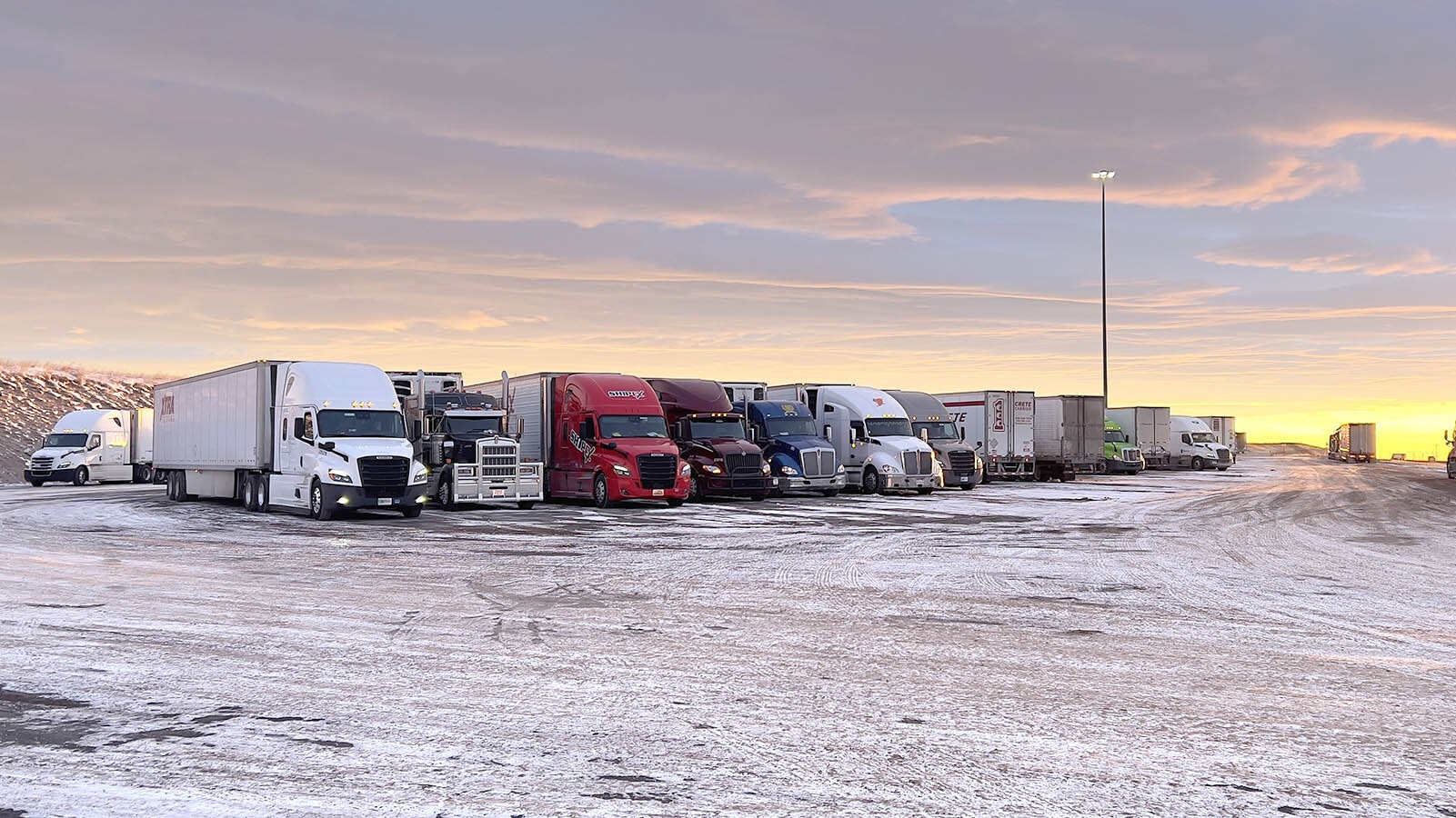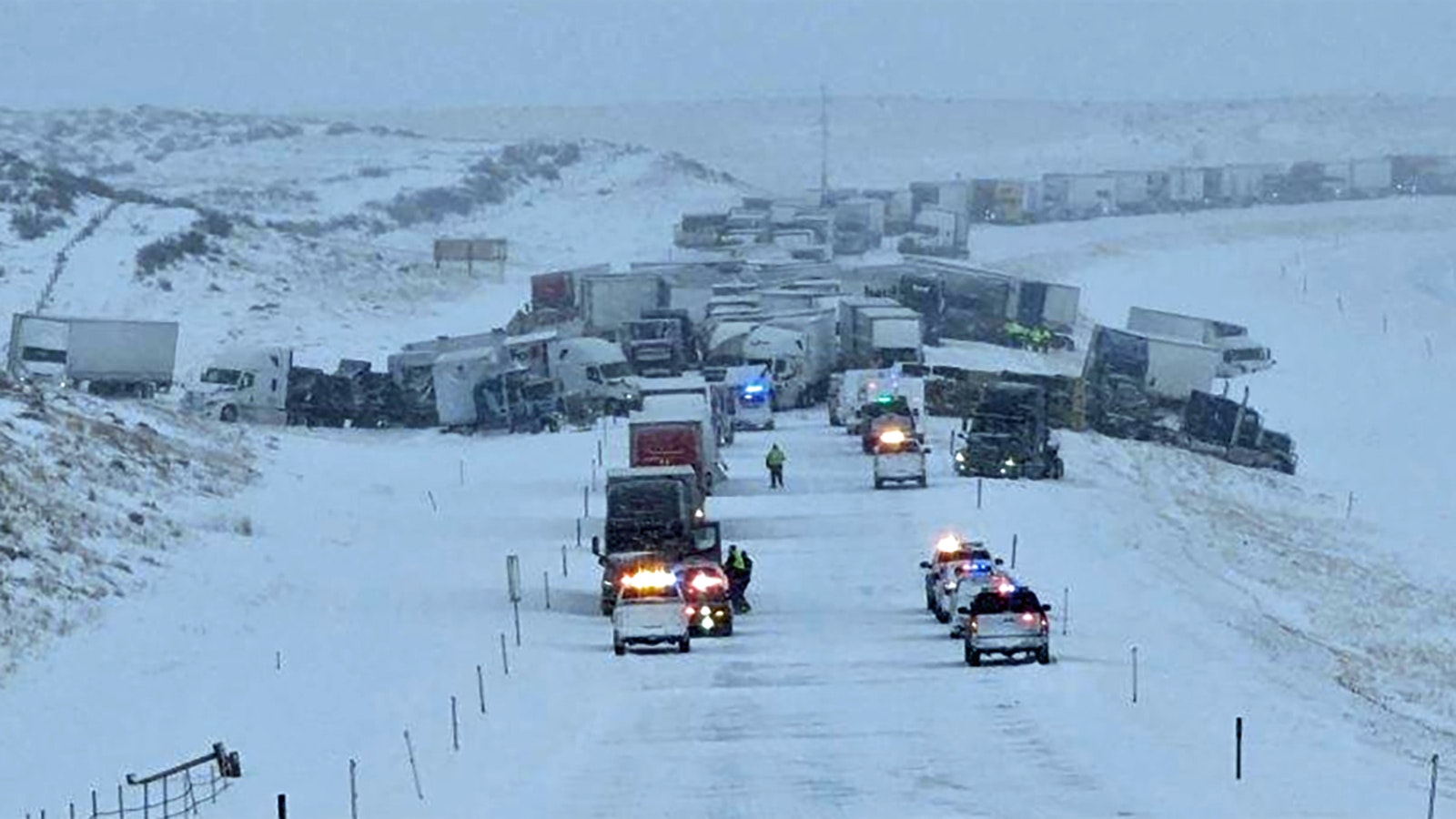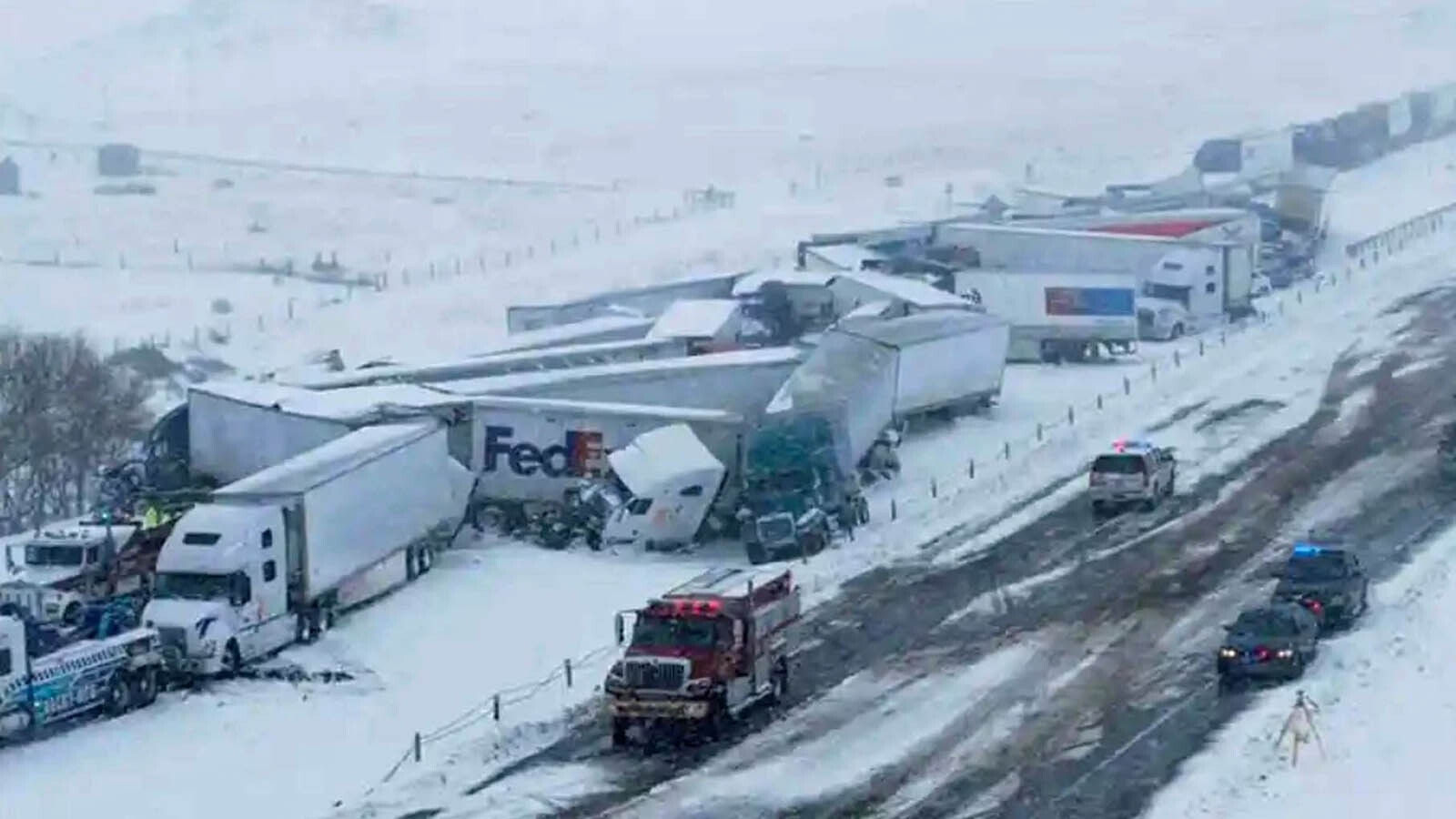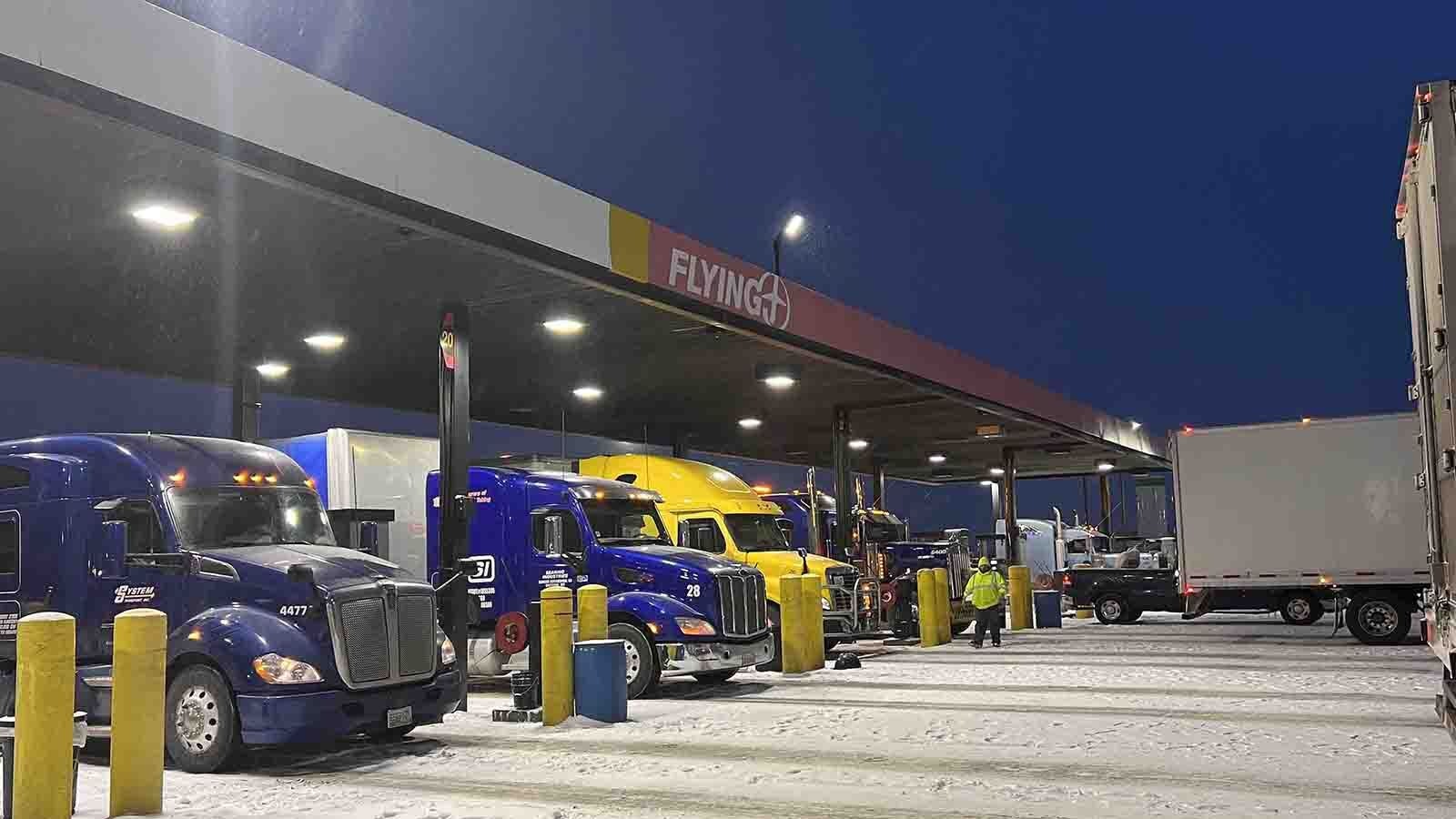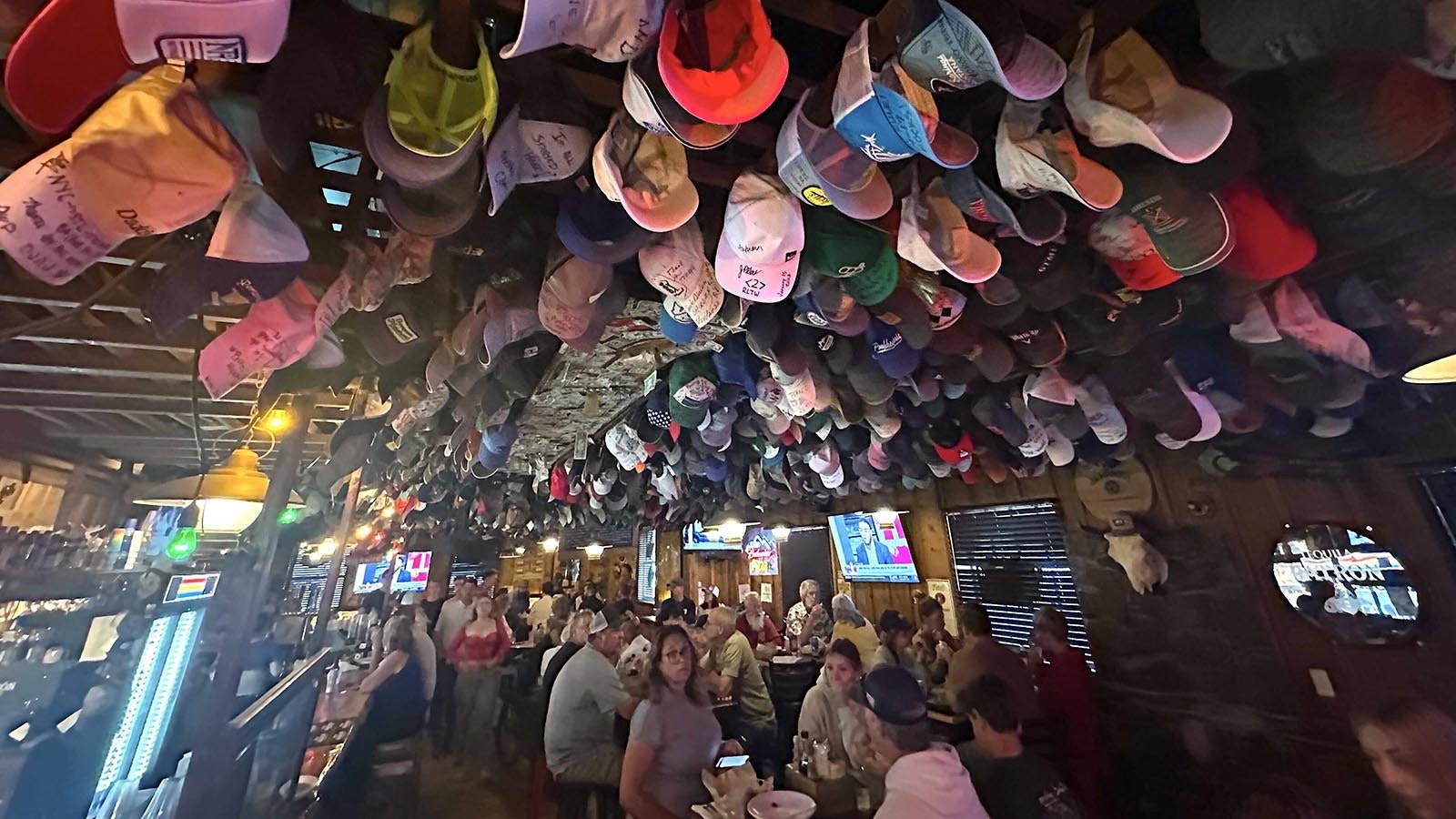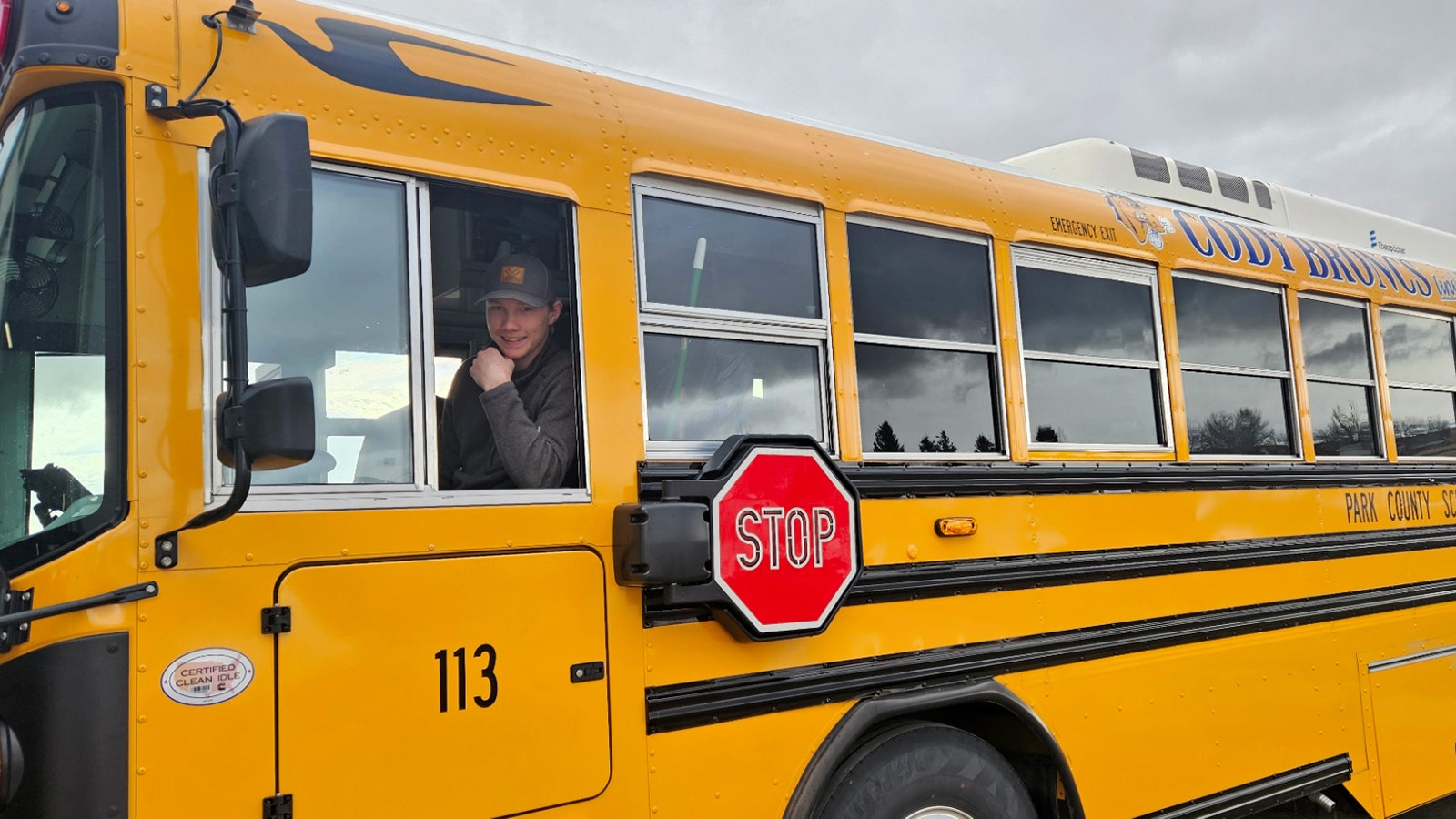Winter cold and storms chase hordes of consumers to the grocery store, where they collectively buy up all the eggs, milk and toilet paper — just in case everyone gets snowed in.
Yet somehow, when those shoppers return to the grocery store a day or two later for the bread, cheese or other necessities inadvertently forgotten, all those nearly empty shelves are somehow magically stocked up again.
But it’s not magic at all.
It happened through a lot of hard, dangerous work, full of icy cold obstacles that can be life threatening, particularly to the inexperienced. Wyoming and U.S. truck drivers are the unsung heroes of our modern world, keeping us all well fed while we stay home, warm and happy, through the worst, be it a polar vortex or a big snowstorm.
Wyoming in particular has all kinds of obstacles to throw at the truck drivers who are vital to keeping our grocery store shelves overflowing.
A lot of those goods come in first to a certain well-known superstore’s DC — that’s short for distribution center — which happens to be located along one of the trucking industry’s most feared routes.
That’s Interstate I-80, otherwise known to truckers as The Gauntlet.
I-80 Is A Killer
I-80 is one of the longest interstates in America and one of the busiest since it goes coast to coast. That puts a lot of trucks on the route, loaded up with the meat, milk, produce and other foods we all need every day.
In Wyoming, I-80 is a particularly tough stretch during winter. Cowboy State Daily was told by more than one truck driver that it’s a stretch many drivers actively seek to avoid.
And for good reason. There’s no shortage of examples of fatal pileups involving dozens of trucks and other vehicles at a time.
“I’ve seen it often on the trucking communication boards,” longtime over-the-road trucker Jamey Sloan, of Nebraska, told Cowboy State Daily.
“It’s the part of their journey that they’re worried about," he said. "Some of them will go clear south if they can, and they’re putting on extra miles to do so, but they know it’s less risk than being hung up in a snowdrift for several days.”
Even local drivers have heard the highway referred to as The Gauntlet.
“Because we’re locals here in Laramie, Rawlins and Cheyenne, we don’t think twice about it,” Charles Van Heule of Wyoming told Cowboy State Daily.
He drives mostly shorter distances delivering beverages throughout the Laramie region, but occasionally even he has a longer trip along I-80, and it’s a route he has learned to respect.
“It is nationally notorious,” he said. “There are people who are terrified of the summit (near Laramie) between November and May. And I get why. You know, Thanksgiving night, we had that 55-car pileup and they had to bus 150 people down to Laramie Fairgrounds with the Red Cross. So, I get it.”
Part of what makes the highway dangerous for truck drivers in particular is the steep changes in elevation.
“Local drivers, we know it, we respect it,” Heule said. “But others who have never experienced it, all of a sudden they’re dropping ... 1,400 feet (elevation) in 9 miles. It is a steep grade, and it surprises you. So, I understand why they call I-80 in Wyoming (The Guantlet), because it is just, it has just claimed so many lives.”
It's a steep drop from Sherman Summit just east of Laramie at 8,640 feet elevation into Laramie at 7,220.
Wind Isn’t Trucking’s Friend
Changes in elevation aren’t the only danger awaiting truck drivers along I-80. Wind is a huge obstacle that sometimes grounds drivers for multiple days.
“As it stands right now, Interstate 80 is closed to light, high-profile vehicles,” a trucker who goes by the Twitter handle Zzay The Truck Driver told Cowboy State Daily on Tuesday. “It sucks for me, because my load weighs 18,000 pounds.”
The threshold is 40,000 pounds, and so until the wind lets up, Zzay was stalled along I-80 watching weather reports and communicating with home base for the all-clear to move again. With trucking rules being what they are, he didn’t expect to be back on the road before Wednesday, maybe longer.
“Usually when this happens, it’s best to just sit and wait,” he said. “When I-80 is closed, there’s only so many routes you can take through Wyoming to get to certain places.”
Zzay has stocked up on everything he’ll need to wait out the downtime. He’s got snacks, he’s got books, he’s got a gaming laptop, he’s got plenty of fuel.
But the real issue for him isn’t mere boredom. When the wheels aren’t rolling, Zzay isn’t getting paid. Meanwhile, he’s burning fuel to keep himself and the truck warm so his fuel doesn’t gel up in the cold.
“If you’re stuck on one load for an entire week because of weather conditions, you’re only getting paid for that one load instead of like the two to three or four loads that you normally do within a week,” he said.
Cold Can Zap The Inexperienced
Inexperience has sidelined dozens of truckers along interstates in Wyoming lately, said Brady Crain, a longtime over-the-road truck driver who has a ranch in the Sundance area.
“I have been running this short stretch of I-90 between Moorcroft and Spearfish the last few days, and I bet I’ve seen 15, 20 trucks on a tow or getting towed,” he told Cowboy State Daily. “They’ve got flat tires because they drove off without making sure their brakes weren’t frozen up.”
Trucker friends, meanwhile, have told Crain they saw between 80 to 100 trucks broken down on the shoulder between Sundance and Sioux Falls for similar reasons.
That, Crain said, is really all about inexperience and a serious lack of training that’s a danger to everyone on the road. It prompted him to start a post on Facebook with tips for new over-the-road truckers who might be passing through Wyoming.
A particular problem he’s seen happen lately is gelled up fuel, which means a long stint in the repair shop warming things up, as well as the blown-out tires caused by frozen brakes.
“When there’s snow and ice and stuff on those warm brakes, it gets in between the brake shoes and the drums,” Brady said. “And then when these guys park, they don’t know any different, because no one has told them any different, and they’ll pull both the truck and the trailer parking brakes.”
Overnight, the moisture that’s collected between the brake shoe and the drum freezes up solid in that position and won’t release. That means the wheels won’t turn and get dragged along the highway instead.
“It only takes about 60 to 80 feet before a tire is ruined that way,” Brady said. “So, if they go up out on the road, up the ramp, then it just burns right off and they blow out and they’re done. Then the tire guy has to deal with it, and that’s not a fun job changing tires when it’s cold.”
Learning The Hard Way
Crain’s Facebook post attracted other experienced truck drivers with similar concerns, talking about what they’ve seen on highways and interstates.
Sloan posted a tip he learned while working in agriculture for keeping fuel warm. That is putting a diaper around the fuel cylinder if fuel is on the edge of gelling up. It creates some serious insulation, Sloan told Cowboy State Daily, and can keep a trucker from being sidelined if the recommended additives aren’t doing the trick.
He’s also concerned about a lack of training and experience out on the highway. To him, it all boils down to too many truck drivers left to learn hard lessons in a hard way.
“I watched a guy freeze his nose — and he had Arctic Express on the side of his truck,” Sloan told Cowboy State Daly. “And he jumped out and pulled on his airlines and they broke like Ramen noodles.”
A couple of truckers donated the right kind of rubber lines that the guy should have had for extreme cold, Sloan said, but when he came out of the truck, he wasn’t properly geared for the weather.
“Within five minutes, I saw the whole side of his nose and cheek turn puffy yellow,” Sloan said. “I told him, you got to get back in your truck. You’ve frost-bitten your nose.”
At first the unprepared driver didn’t believe Sloan.
“No way, man,” the guy said.
“I said, ‘No, you have,’” Sloan told Cowboy State Daily. “‘You’ve got to get back in your truck and stay there. We’ll finish the repair.’”
Lack of proper cold-weather gear is just one of the many situations Sloan has run into.
All the inexperience “is something that these guys come up against, and it makes it harder for the people that come out and know how to do the job to basically run a novice crew through all the fundamentals,” he said. “These guys are learning hard lessons on the job.”
Sloan happened to see the guy a few days later at a different stop, and it was a chilling sight.
“He had the side of his nose and down through his cheek look like it was a quarter-inch deep, and it was just like red, raw, dry scab,” Sloan said.
“These guys get out here, and they’ve never seen these harsh conditions," he said. "They gotta go out to California and pick up a load of cheese or vegetables or whatever and they don’t know what they’re in for. They’re not mentally equipped, they’re not physically equipped. Their trucks are not equipped. It’s just a nightmare.”

Renée Jean can be reached at renee@cowboystatedaily.com.

